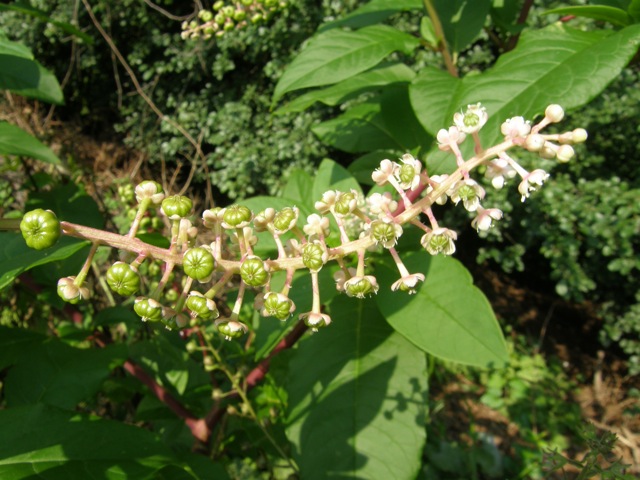Phytolaccaceae, the pokeweed family.
Description:
Plant:
Large robust plants 4'-10' high with pink stems, elongated clusters of
small white flowers and black-purple berries on bright pink stalks.
Perennial.
Flowers:
Small (1/4"), white, with five petal-like sepals on short stems in elongated
clusters (racemes). Petals absent. Blooms progressively along the cluster with
flowers at the end co-occuring with green berries further down.
Leaves:
Simple, alternate, smooth-margined, ovate, 4"-10" in length with short stem.
Fruit:
Black-purple berries in elongated clusters on short, bright-pink stalks.
Blooming:
July-September.
The season is extended, with flowers and berries occurring contemporaneously.
Habitat:
Open woods, wood margins, and clearings.
Comments:
Pokeweed is very distinctive; no other plant in the northeast has
the long clusters of dark purple berries on bright pink stalks.
The roots, and to some extent, the berries and mature foliage are poisonous,
though the very young shoots, before pink color develops, can be gathered and
eaten like asparagus.
The dark purple juice of the berries was employed by the early colonists
for coloring wine, and as a temporary dye.
There is some disagreement over the toxicity of the berries, but at any
rate they have a rank odor, and it seems unlikely one would be tempted to
eat many of them.
Where to find it:
